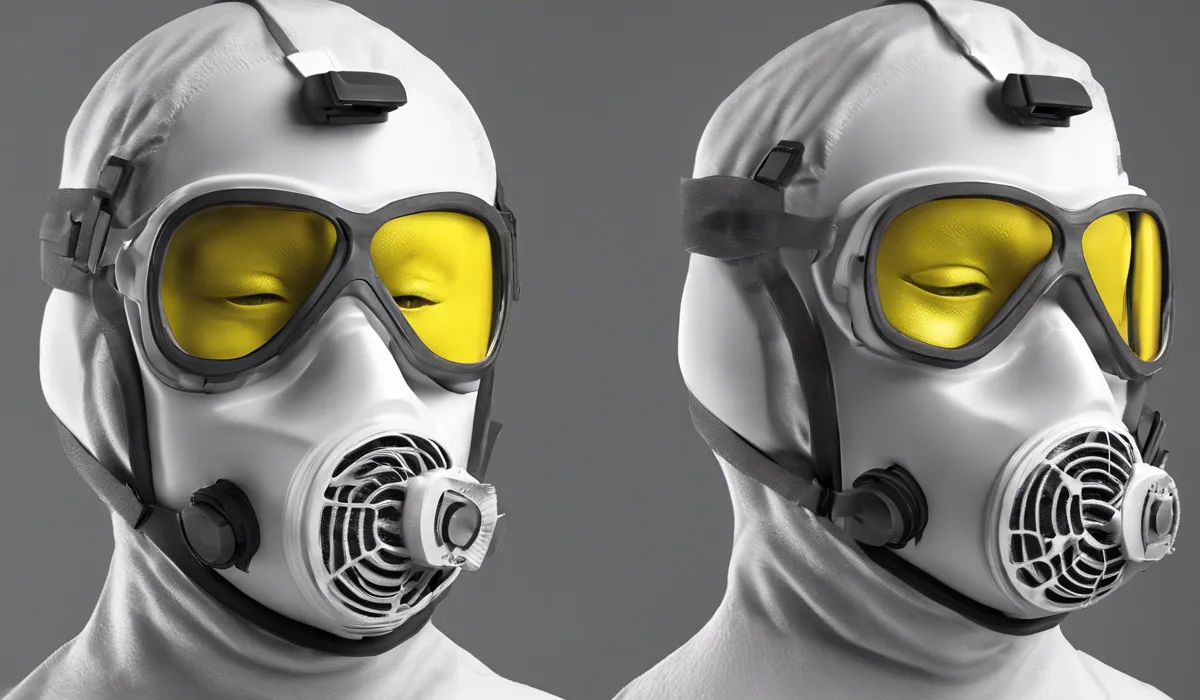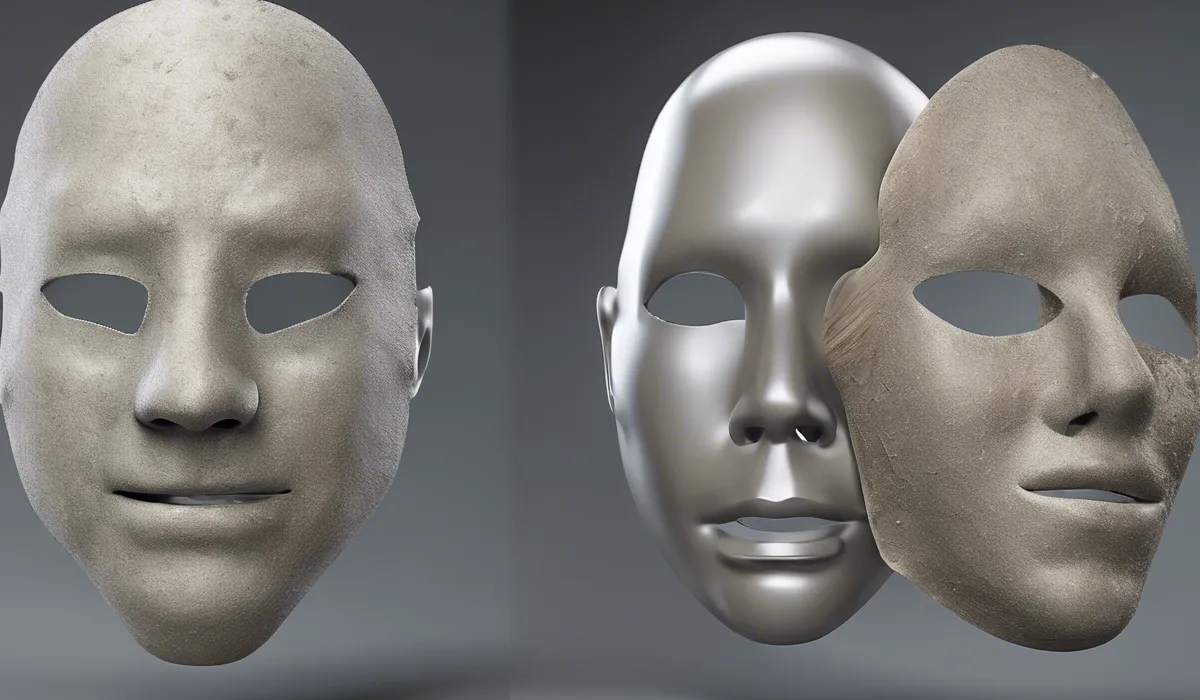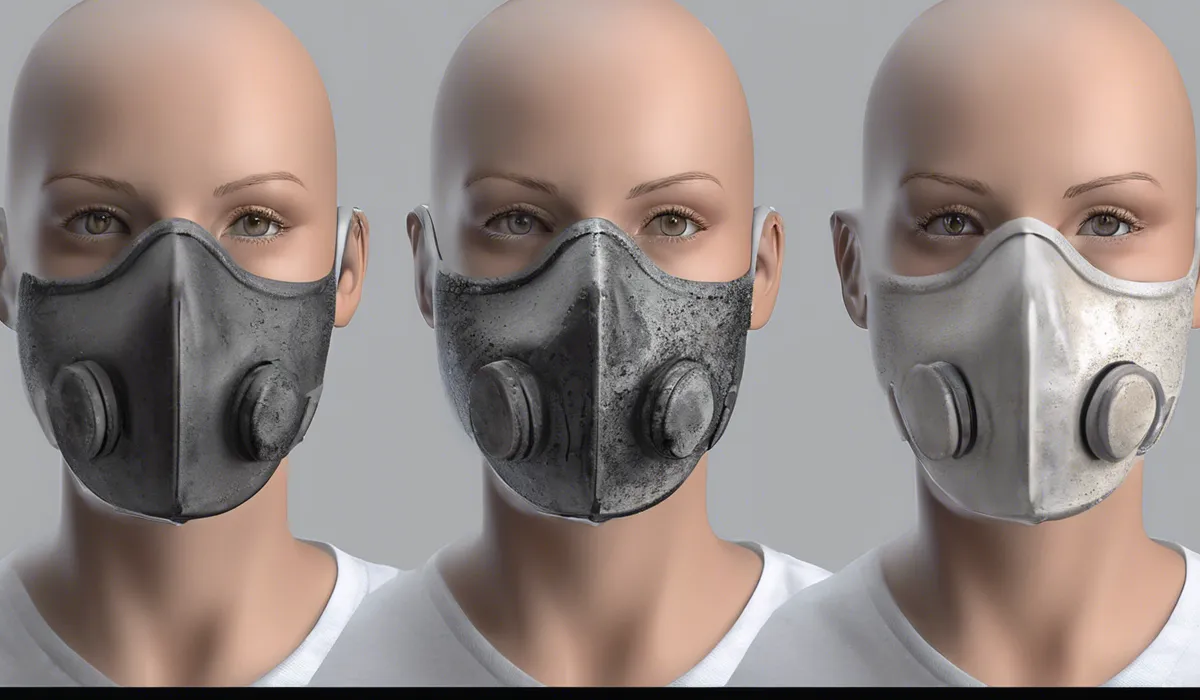For mold protection, use an N95 respirator mask or higher. These masks filter out mold spores effectively. Ensure a proper fit for maximum safety. P100 respirators offer even greater filtration against mold.
Understanding Mold and Respiratory Protection

What Is Mold?
Mold is a type of fungus that grows in multicellular structures called hyphae. These tiny organisms thrive in moist environments and can be found both indoors and outdoors.
In nature, mold plays a crucial role in breaking down organic matter, but inside our homes or workplaces, it can become a problem.
Common Locations for Mold Growth
Mold can grow on a variety of surfaces, especially where there is moisture and organic material.
Common spots include bathrooms, kitchens, basements, and areas with water damage or leaks.
It can also be found on paper, wood, and fabrics, making it a pervasive issue in many environments.
Health Risks of Mold Exposure
Breathing in mold spores can lead to health issues, especially for those with allergies, asthma, or compromised immune systems.
Symptoms can include coughing, sneezing, eye irritation, and in severe cases, lung infections. Understanding these risks highlights the need for proper protection.
The Need for Respiratory Protection
When dealing with mold, it’s vital to wear a mask that can filter out mold spores to prevent inhalation and the associated health risks.
Choosing the right type of mask is essential for safety and health, especially during mold removal or when in mold-contaminated areas.
Types of Masks and Their Effectiveness Against Mold

Limitations of Surgical Masks and Cloth Face Coverings
While surgical masks and cloth face coverings can block some large particles, they are not designed to filter out mold spores.
These spores are much smaller than the materials these masks can stop, making them ineffective for mold protection.
N95 Respirators and Mold Spores
N95 respirators are capable of filtering out at least 95% of airborne particles, including mold spores.
They fit tightly to the face and have a particulate filter that traps harmful particles. For mold protection, an N95 mask offers a significant level of safety.
P100 Respirators and Mold-Specific Filters
P100 respirators provide an even higher level of protection, filtering out 99.97% of airborne particles.
They often come with specialized filters designed specifically for mold spores and other hazardous substances, making them ideal for heavy mold exposure.
Full-Face Respirators for Mold Remediation
For professional mold remediation, full-face respirators are recommended. They not only cover the mouth and nose but also protect the eyes from mold spores.
These respirators are equipped with powerful filters and provide a comprehensive defense during extensive mold clean-up activities.
Choosing the Right Mask for Mold Exposure

Assessing Mold Exposure Levels
Before selecting a mask, it’s important to evaluate the mold exposure level. Light cleaning in a moldy area might only require an N95 mask, while heavy remediation work could necessitate a P100 or full-face respirator for maximum protection.
Ensuring a Proper Fit and Comfort
A mask can only offer protection if it fits well. A proper seal around the nose and mouth is crucial to prevent mold spores from being inhaled.
Additionally, the mask should be comfortable enough to wear for the duration of the exposure.
Maintenance of Reusable Masks
Reusable masks require regular maintenance. This includes cleaning, replacing filters, and checking the seal and straps for wear and tear.
Proper care extends the life of the mask and ensures it remains effective against mold spores.
Certifications and Standards for Mold Masks
When choosing a mask for mold work, look for certifications such as NIOSH (National Institute for Occupational Safety and Health) which indicate the mask has been tested and meets specific standards for filtering particulates.
This ensures the mask will provide adequate protection against mold.
FAQs About Masks for Mold Protection
What type of mask should I wear for mold protection?
To protect against mold, you should use an N95 respirator mask or higher as these are designed to filter out mold spores effectively.
Is an N95 mask sufficient for mold removal?
Yes, an N95 mask is sufficient for mold removal as it can filter out most mold spores when properly fitted.
Can I use a regular dust mask for mold?
No, a regular dust mask is not recommended for mold as it does not provide the same level of filtration as an N95 or higher-rated respirator.
How do I ensure a proper fit for my mold protection mask?
Ensure a proper fit by pressing the mask against your face, securing the straps, and adjusting the nose clip to prevent air from leaking around the edges of the mask.
What is a P100 respirator, and is it better for mold protection?
A P100 respirator is a type of mask that offers a higher level of filtration against mold spores compared to N95 masks, making it a superior option for mold protection.
Final Thoughts
When dealing with mold, an N95 respirator mask or higher is essential for effective filtration of mold spores.
A proper fit is crucial for maximum safety. For even greater protection, P100 respirators are recommended as they offer superior filtration capabilities against mold.
